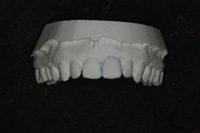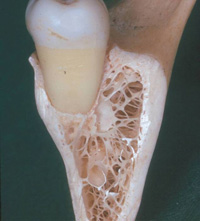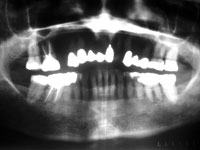At a recent dental office managers meeting, we had just finished sharing several “success stories” about how we managed to cut several of our top clients’ monthly new patient numbers in half. Then the room went dead silent. You could hear a pin drop. The audience was waiting for the punch line when we explained ourselves to allay their fears and reassure the doctors in attendance that we were not a couple of lunatics bent on laying waste to flourishing practices.
The purpose of this article is not to tackle the entire subject of patient retention. There have been volumes already written on this vital element of practice growth and prosperity. We ourselves have an entire workshop dedicated to all the procedural and practical fundamentals of creating lifetime patients. However, this article deals with logical reasoning in a concise, critical examination of the subject of new patients, how you handle them, and the need for a simple-yet-major paradigm shift in your philosophy toward growing your practice.
SHIFT NO. 1
Stop viewing marketing as the silver bullet that cures all practice ills. In our new book, The 25 Surefire Ways to Destroy Your Dental Practice, this one is chapter 15. We cannot begin to tell you how often we encounter established practices with a solid patient base that are seeing 20, 30, or even 50 or more new patients a month but are struggling to meet their growth and expansion goals. Why? For several reasons, first of which is that of all ways to grow a practice, external marketing is the most expensive and least effective.
There is very little control of the type of patients you attract with external marketing, most of whom are often looking for a doctor who will take their insurance or who are shopping for the best price. This creates numerous problems right from the start. Unless you have a rock-solid front-end system that effectively prequalifies every new patient inquiry from your external marketing, you are in for further problems. When patients who are not a fit for your practice end up in your production schedule—be they shoppers, budget seekers, or people responding to special introductory offers with incorrect future expectations—it not only creates problems but lost production time as well.
We worked with one practice that was seeing more than 50 new patients a month, mostly from its external marketing. After investigating and tracking its new patient conversion rate (when it was discovered that somehow the practice was not coming close to reaching its financial goals), we found that 48 hours of lost or wasted production time in 1 month had been spent on unqualified, uncommitted, or failed new patient visits! The practice’s new patient treatment conversion averaged only 10% to 12% for external marketing patients, with only 30% moving into recare. Some shifts were necessary.
SHIFT NO. 2
The best way to build your practice is from the inside out. Unless you are new to practice, have recently relocated, or all your patients currently in recare have healthy mouths free of disease and decay, with no desire to improve the appearance of their teeth (and have already referred all their family and friends for care), then you have no need to look externally from your practice to meet all of your professional goals. There may be other reasons, but the point here is you have developed hundreds, perhaps thousands, of trusting relationships with your existing patient base. These patients are more likely to follow your treatment recommendations based on the rapport and understanding you have gained over the months and years they have come to the office to see you and your hygiene team. It is often forgotten that we have a radically different viewpoint than most of the outside world toward dental health, and it often takes time to educate patients and change their viewpoint. Your existing patients who are in recare should share more of your viewpoint from the repeated learning experience each visit to your office has cultivated.
Additionally, if you were to do a chart audit of your active patients, you will more than likely find plenty of incomplete, unaccepted, and even nonrecommended treatment; ie, the “wait and watches” that have piled up over time and need to be confronted and handled. You need to ask yourself if your valuable existing patients are truly being given the best possible care and attention based on the state of their current dental health, or have you unknowingly compromised your standard for care regarding healthy teeth and gums?
This shift mostly encompasses a logical move toward emphasizing and focusing on quality over quantity. Your existing patients are your quality relationships, while your new patients should be viewed as your quantity relationships with whom you must develop quality, trusting relationships. However, it is critical to understand that converting quantity into quality starts before a new patient even makes it into your schedule. Initially, it begins with not having a “scarcity mentality” when it comes to new patients; ie, it is better to see 20 prequalified new patients that are a match for your practice philosophy and convert them into quality, lifetime relationships than it is to see 40 non-qualified new patients just to get the same 20. Being busy does not necessarily equate with being profitable or fulfilled in practice.
SHIFT NO. 3
Patient education is the cornerstone of your practice. Patient education is probably the most neglected area of patient retention, yet it is by far the most important. It can make or break a practice. It is the difference between smoothly running, profitable practices with high patient compliance and treatment acceptance versus those that are not. If there were only one thing you decided to do to turn the tide of practice success in your favor, it would be to implement a strong patient education system.
Patient retention is based upon areas of understanding—what is said, what is heard, and what is duplicated or repeated by the patient. In other words, it is based upon what you and your team say, how you say it, and how well patients understand and can demonstrate by their words and actions that they got it. This can encompass everything from (1) teaching dentistry in layman’s terms with use of support tools like intraoral cameras, x-rays, and models or charts to (2) treatment planning and financial arrangements that are clearly understood and agreed upon to (3) a complete review, understanding, and acceptance of office policies.
The points of agreement and understanding are numerous, but the key here is patient reality. Reality is what the patient agrees is real and actual about what you and your team are communicating. Reality is the most neglected element of patient education and subsequent retention. You must take the time and dedicate the attention to creating patient retention through gaining agreement as they go through the process of becoming a patient. Too often it is assumed that patients understand the condition of their dental health, agree with the treatment presented, and accept the policies of the office when they simply do not. Indicators of this are low case acceptance, no understanding of the urgency or need for treatment, disappointment with staff, poor recare compliance, etc.
CONCLUSION
For many practices, it is a major “shift” to give patient education its rightful importance and make it above all else the foundation for growth and expansion of the practice. When patients completely understand and agree with you, your treatment philosophy, your standard for care, and why you operate your practice for their benefit, they will accept it, comply with it, and value it.
The end result? Less stress, increased case acceptance, and happier, healthier patients who refer other quality relationships to you.
Mr. Kadi and Mr. Massotto are the managing partners of Staff Driven Practices. They have been nationally recognized by ABC, FOX, CNN News, Entrepreneur magazine, and Dentistry Today. After 10 years of business consulting success, Mr. Kadi and Mr. Massotto joined forces to use their extensive expertise in business and people development to master their application in the dental field. Since 1997, their unique processes have helped create fulfilling lives for dentists and their teams. If you wish to receive a copy of their book, The 25 Surefire Ways to Destroy Your Dental Practice, call (973) 812-2188 or e-mail gary@staffdriven-practices.com.











